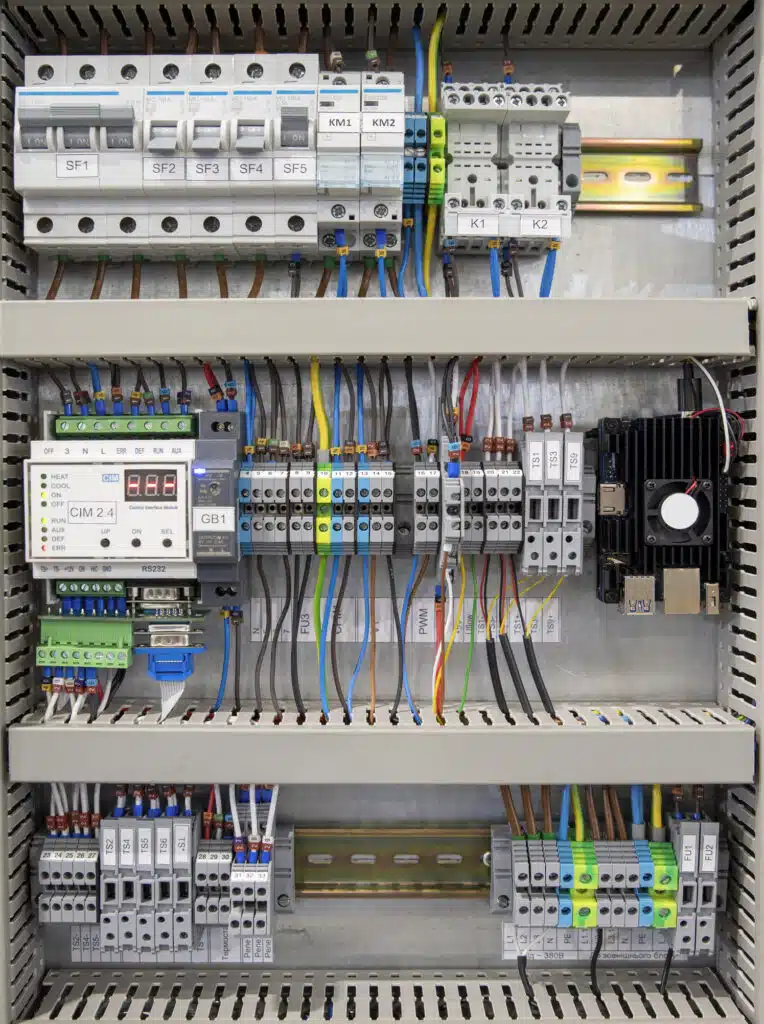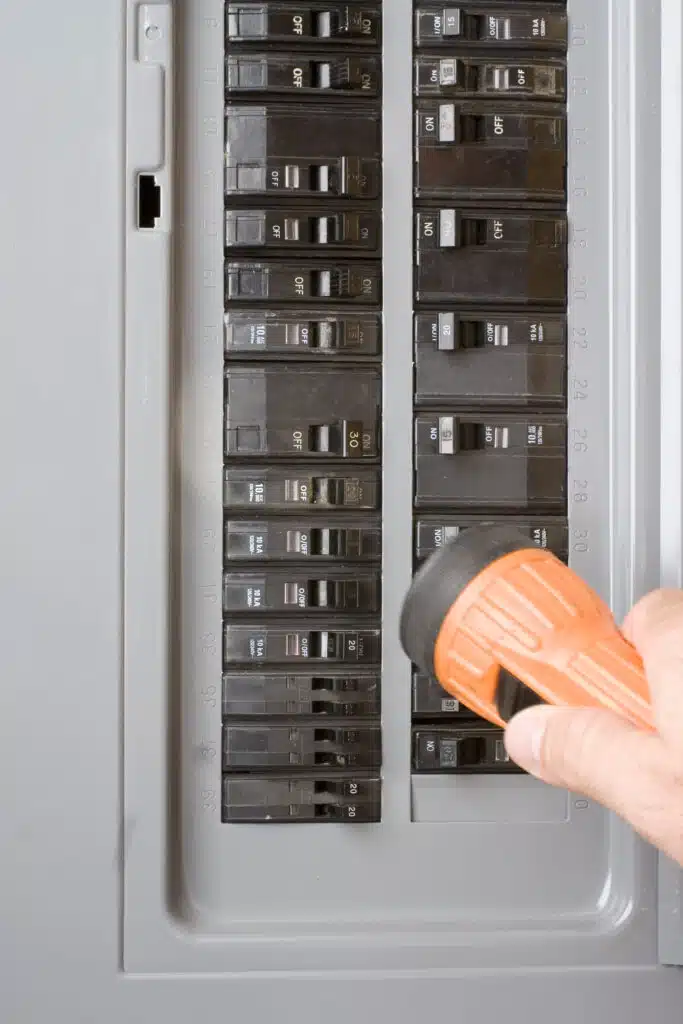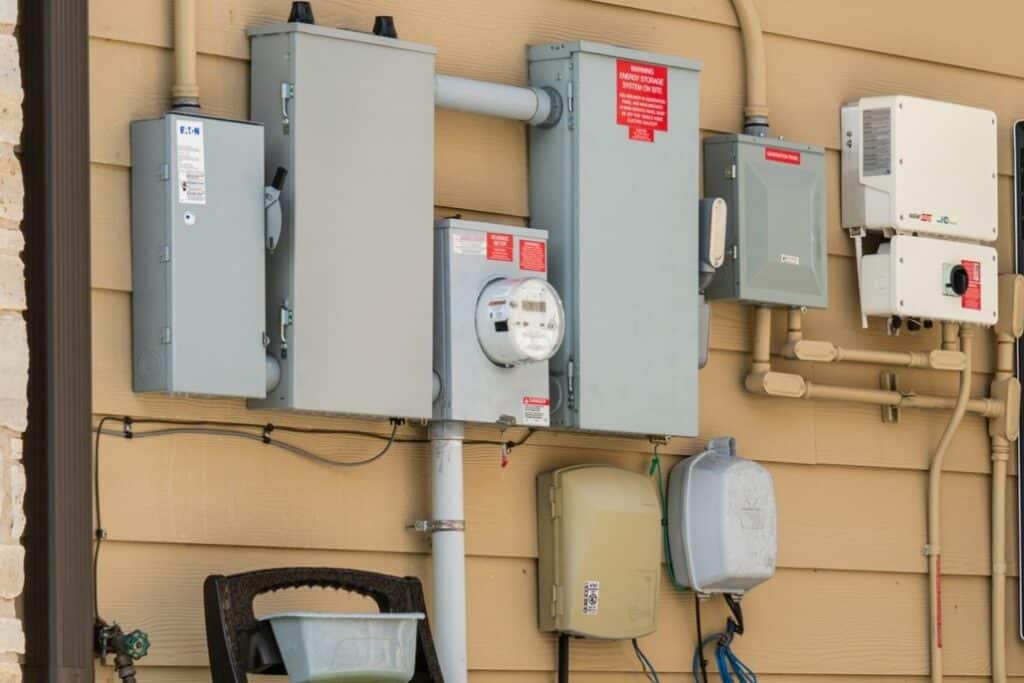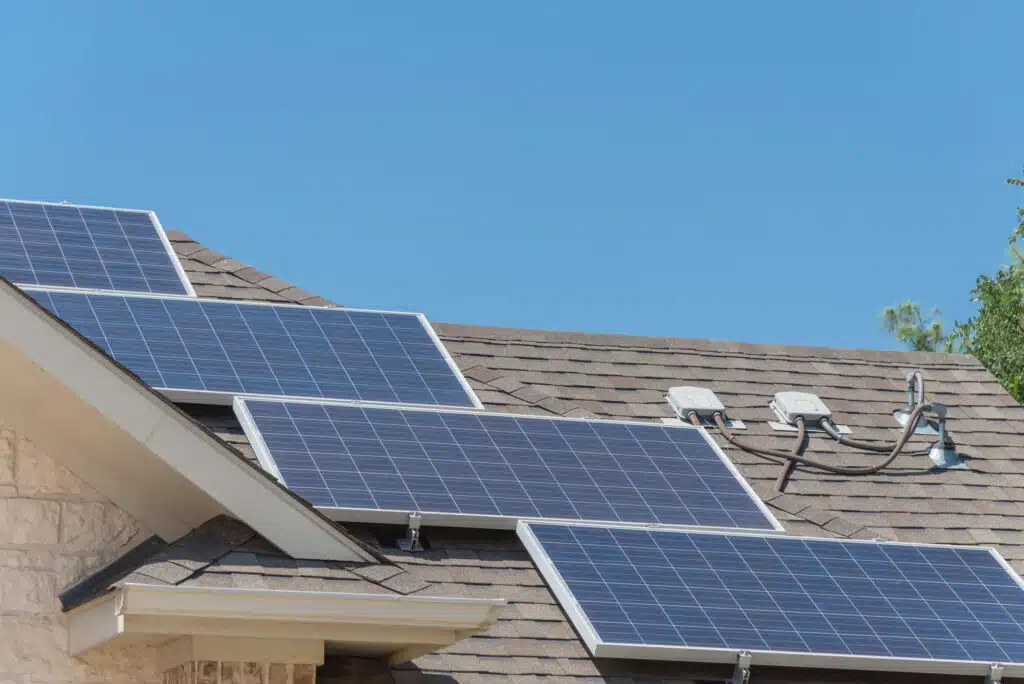Static electricity becomes a frequent problem during the winter months, often leading to discomfort and inconvenience. The drop in humidity levels caused by indoor heating systems creates the ideal conditions for static buildup, making everyday tasks like touching doorknobs or folding laundry an unpleasant experience.
Low humidity, combined with the friction from synthetic materials commonly worn in colder weather, increases the presence of static electricity in your home. This can lead to mild shocks, clingy fabrics, and even potential damage to sensitive electronics.

Why Is Static Electricity Worse in Winter?
Static electricity becomes much more noticeable in winter due to environmental factors that encourage its buildup. Dry indoor air, the friction from synthetic fabrics, and reduced ventilation all play a role in making static shocks a common annoyance.
Dry Indoor Air
Indoor heating systems dry out the air, lowering humidity levels significantly during the winter months. This lack of moisture in the air makes it easier for electrical charges to accumulate on surfaces and on your body.
Humid air, on the other hand, disperses electrical charges more effectively, which is why static shocks are less frequent in warmer months. When the air is dry, static clings to furniture, fabrics, and even your skin, causing a cycle of discomfort. The drier your indoor environment, the more likely you are to experience frequent and noticeable static buildup.
Friction From Synthetic Fabrics
The clothes you wear in winter are often made from materials like wool, polyester, and fleece, which are excellent at generating static. When these fabrics rub against each other or other surfaces, they create friction, leading to the buildup of electrical charges.
Wearing layers, as many people do in cold weather, increases the opportunities for static to accumulate. Synthetic materials are especially prone to holding onto these charges, making shocks more frequent and intense. Every time you remove a sweater or touch a surface, you’re likely to feel that all-too-familiar zap of static electricity.
Reduced Ventilation
During the winter, homes are tightly sealed to keep the cold out and the warmth in, which limits ventilation. This reduction in airflow prevents fresh, moist air from circulating, allowing static-prone dry air to dominate indoor spaces.
Without proper ventilation, the buildup of static becomes much harder to manage, as there’s no mechanism to naturally balance the environment.
The combination of closed windows, heating systems, and lack of airflow creates the ideal conditions for static electricity to thrive. This static-prone environment not only leads to discomfort but also increases the risk of static-related issues with electronics and other household items.
How Static Electricity Affects Your Home
Static electricity is more than just an annoying zap; it can have several effects on your home and daily life. From discomfort to potential damage, the impacts of static can disrupt your routine in surprising ways.
Personal Discomfort
Static shocks are one of the most noticeable effects, creating small but sharp surprises whenever you touch a conductive surface. These shocks happen when built-up static charges are suddenly released. You might feel them when touching metal doorknobs, light switches, or even another person.
While not harmful, these shocks are unpleasant and can catch you off guard, especially in dry winter conditions. They also make mundane activities, like folding laundry or brushing your hair, more frustrating due to the constant buildup of static.
Damage to Electronics
Static electricity poses a real threat to your electronics, as sensitive components can be damaged by sudden discharges. Even small zaps can interfere with the circuits inside devices, potentially causing them to malfunction or fail. Static buildup near computers, phones, or other sensitive equipment increases the risk of these issues.
For example, handling a phone with a strong static charge can lead to unwanted consequences like data loss or hardware damage. Over time, repeated exposure to static discharges can shorten the lifespan of expensive electronics, making it essential to control static electricity in your home.
Clothing Cling and Hair Issues
Static electricity makes clothing cling together, creating embarrassing and uncomfortable situations. Skirts and pants stick to legs, while shirts cling to bodies in ways that feel restrictive or awkward. Hair also suffers, as static buildup makes it frizzy, unmanageable, and prone to standing on end.
This can make getting ready a hassle, especially in the winter when static is at its peak. Even your bedding isn’t immune—blankets and sheets can stick together, making them harder to manage when doing laundry or making the bed. These everyday nuisances highlight just how disruptive static can be around the home.
Tips to Reduce Static Electricity in Your Home
Static electricity can be controlled with a few simple changes to your environment and daily habits. These practical solutions are easy to implement and can make a noticeable difference in reducing static buildup.
Increase Humidity Levels
Adding moisture to the air is one of the most effective ways to reduce static electricity in your home. Using a humidifier helps maintain indoor humidity levels between 30-50%, which is the ideal range for preventing static.
This added moisture disperses electrical charges, making static buildup less likely. Houseplants can also help increase humidity naturally by releasing water vapor into the air. Placing bowls of water near heat sources is another simple trick to keep the air less dry and reduce static-related discomfort.
Use Anti-Static Products
Anti-static sprays and fabric softeners are great tools for managing static electricity. Spray anti-static products on carpets, furniture, and clothing to minimize static buildup. Dryer sheets work wonders for clothes by reducing friction during the laundry process.
Adding fabric softener to your wash also helps keep clothing fibers smoother, which reduces static cling. For high-traffic areas, anti-static mats are a practical solution to prevent the buildup of charges on flooring and surfaces.
Choose Natural Fabrics
Switching to natural fabrics like cotton and linen can significantly reduce the amount of static in your home. These materials are less likely to generate or hold onto electrical charges compared to synthetic fibers like polyester or nylon.
Wearing cotton-based clothing, especially in layers, helps cut down on static shocks throughout the day. When choosing home textiles like bedding and curtains, opt for materials made from natural fibers to further minimize static buildup indoors.
Moisturize Your Skin
Dry skin can make you more prone to static shocks, so keeping it hydrated is key. Use a good-quality moisturizer daily, especially after bathing, to lock in moisture and protect your skin from drying out. Focus on areas like your hands and arms, which are more likely to come into contact with conductive surfaces.
Drinking plenty of water also helps keep your skin hydrated from the inside out, reducing the likelihood of static buildup. Proper skin care not only makes you feel better but also reduces the uncomfortable effects of static electricity.
Avoid Overloading Circuits
Overloaded circuits can amplify static problems in your home, so it’s important to use electricity wisely. Avoid plugging too many devices into a single outlet or extension cord, as this increases the potential for electrical issues. Spread out your appliances and electronics across different circuits to distribute the load more evenly.
This also reduces the risk of electrical malfunctions that can worsen static-related problems. Keeping your home’s electrical system well-maintained ensures a safer and more static-free environment overall.
Long-Term Solutions for a Static-Free Home
Upgrade Flooring Materials
Carpets contribute to charge buildup because their fibers easily trap and transfer electrical energy. Replacing carpets with alternatives like hardwood, tile, or laminate flooring can significantly reduce this issue while being easier to maintain. These materials naturally resist charge buildup and provide a sleek, modern look for your home.
If a full replacement isn’t possible, consider using rugs made of natural fibers like wool, which generate less charge than synthetic options. Regular vacuuming and cleaning also help by removing dust and dirt that can exacerbate the issue.
Use Anti-static Mats
Anti-static mats are a simple and effective solution for areas prone to charge buildup, particularly around electronics or workstations. These mats are designed to neutralize electric charges, providing a protective barrier for sensitive devices like computers and TVs.
They are versatile and easy to use in places like desks, entertainment centers, or any high-traffic area where the issue persists. Affordable and low-maintenance, these mats offer a long-lasting way to prevent charge buildup without major renovations.
Cleaning them regularly ensures they remain effective and keeps your home a safer environment for both people and devices.
Professional Electrical Inspections
Persistent electrical shocks often indicate deeper issues requiring professional attention. An electrician can inspect your home’s grounding system to ensure it effectively dissipates charges and reduces energy imbalances. They can also identify faulty wiring or overloaded circuits that may exacerbate the problem.
Proper electrical grounding not only minimizes these issues but also enhances the overall safety and functionality of your home. Scheduling periodic electrical inspections helps maintain a secure and balanced environment for the long term.
Improve Air Circulation & Ventilation
Poor air circulation contributes to energy buildup by allowing charged particles to remain stagnant in your living space. Installing ceiling fans or using air purifiers with ionizing features can help disperse these particles and maintain balance.
Cracking windows occasionally, even during colder months, also encourages better airflow and keeps indoor energy levels in check. Enhanced ventilation not only reduces the discomfort of shocks but also improves overall air quality in your home.
Signs You Need Professional Help
Persistent Static Issues
If static electricity continues to be a problem despite trying common solutions like humidifiers, anti-static sprays, and natural fabrics, it may be time to seek professional assistance.
Persistent static can indicate underlying issues in your home’s environment or electrical system that require expert evaluation. Sometimes, static electricity results from poor grounding or materials that amplify static buildup, which professionals can identify and address.
Ignoring the issue can lead to continued discomfort, damage to electronics, and frustration with unresolved shocks. A professional electrician can diagnose and resolve the root causes, ensuring your home is static-free and more comfortable.
Damage to Electronics
Repeated static shocks to your electronics are a clear sign of a bigger issue. Static discharge, even if minor, can gradually harm sensitive devices like computers, TVs, and gaming consoles, potentially leading to costly repairs or replacements. If you notice frequent disruptions or malfunctions in your devices, static electricity may be to blame.
Professionals can assess the setup of your electronic systems and recommend safeguards, such as anti-static mats or improved grounding solutions, to protect your valuable equipment. Taking action early prevents further damage and ensures the longevity of your devices.
Circuit Overloads
Frequent tripping of circuit breakers or overloaded circuits can create conditions that worsen static electricity in your home. Overloaded circuits may increase the likelihood of electrical imbalances, which can amplify static buildup. These situations often require professional inspection to ensure that your home’s electrical system is properly configured and safe.
Electricians can upgrade your circuits, install surge protectors, and improve your home’s overall electrical efficiency. By addressing these issues, you can not only reduce static electricity but also prevent potential safety hazards in your home.
Benefits of Reducing Static Electricity
Improved Comfort
Eliminating static electricity makes your home more comfortable and enjoyable, especially during winter months. You can avoid those unpleasant shocks when touching doorknobs, switches, or other metal surfaces.
With less static, you’ll also notice that your clothing and bedding are less clingy, making daily activities and routines smoother. It can even improve your overall mood, as you’re no longer startled by unexpected zaps throughout the day. A static-free home is a cozy and relaxing environment for you and your family.
Protected Electronics
Reducing static electricity is essential for the safety and longevity of your electronics. Static discharge can damage sensitive devices like laptops, TVs, and gaming consoles, sometimes beyond repair. Implementing static-reducing measures like anti-static mats and proper grounding can help protect these valuable investments.
Preventing static-related damage saves you from costly repairs or the inconvenience of replacing expensive equipment. A static-free environment ensures your electronics perform reliably and last longer.
Safer Home Environment
Taking steps to minimize static electricity contributes to a safer overall home environment. By ensuring proper electrical grounding and reducing static buildup, you lower the risk of electrical shocks that could be harmful in rare cases.
It also helps maintain the integrity of your electrical system, preventing overloads and potential fire hazards. Creating a balanced and static-free home improves not just comfort but also safety for everyone under your roof. Addressing static issues adds to the peace of mind that your home is well-maintained and hazard-free.
Zap Away Winter Shocks with Mister Sparky of Lancaster!
Tired of dealing with those pesky winter zaps and protecting your home from electrical mishaps? Mister Sparky of Lancaster is here to help keep your home safe and comfortable this season.
From expert grounding inspections to reliable solutions tailored to your needs, we’ve got you covered. Contact our Lancaster-based team today and take the first step toward a more comfortable and shock-free home!

Frequently Asked Questions (FAQ)
1. Can a humidifier completely get rid of static in my home?
A humidifier is a great way to reduce shocks by adding moisture to the dry winter air, but it’s not a complete solution. Combining it with other strategies, like anti-static sprays or wearing natural fabrics, provides more comprehensive results. These methods create a balanced indoor environment that significantly minimizes the occurrence of shocks.
2. How can I protect my electronics from electrical shocks?
Anti-static mats are an excellent option for protecting sensitive devices like computers and TVs. Ensuring your home’s grounding system is properly set up and avoiding overloaded circuits are also key steps to safeguard electronics. These precautions help maintain the longevity and safety of your valuable equipment.
3. What materials should I use to minimize shocks in my home?
Natural fibers, such as cotton and wool, are much less likely to generate electrical charges compared to synthetic materials. Installing anti-static flooring or using natural fiber rugs can further reduce issues with shocking surfaces. By choosing these materials, you can create a more shock-free and comfortable living space.
4. When should I call a professional for help?
If you’re still experiencing shocks or noticing damaged electronics despite taking precautions, it’s time to contact an expert. Professionals can evaluate your home’s grounding system and check for any electrical imbalances that may be causing the issue. Their expertise ensures long-lasting solutions for a safer and more comfortable home.
5. Does reducing shocks improve home safety?
Taking steps to minimize electrical discharges significantly enhances the safety of your home environment. It prevents potential harm to your devices, reduces personal discomfort, and mitigates the risk of electrical hazards. A properly grounded and shock-free home provides peace of mind for everyone in your household.


































